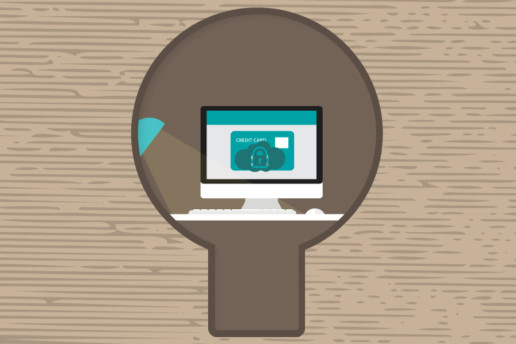How data analytics is changing employee benefit strategies
As technology continues to grow and expand, more employers are turning to digital platforms when it comes to managing their employee benefits program. With more access to technology, employers can use data accumulated from their employees to better personalize their employee benefits package to fit each individual's needs. Take a look at this column by Eric Helman from Employee Benefit Advisor and find out some more tips on how you can better leverage the data from an employee benefits program to fit your employees'es needs.
In the realm of employee benefits, surveys, focus groups and anecdotes about specific employee encounters with the benefits program typically drive the discussions about how that program should evolve in the future. Unlike the situation at Outback, it is difficult to “observe” how people actually consume benefits and tailor a program that is attractive to them.
Fortunately, recent developments in data analytics have unlocked the potential of using consumer behavior insights to drive employee benefits strategy.
Leading practitioners are beginning to leverage these developments to change the annual renewal process. The technologies that support data aggregation, normalization and reporting have been aggressively developed to support the provider and payer communities. Only now have these advancements been made available to employers and their advisers.
The most successful practitioners point to the value of standardized claims reporting based upon credible data. By combining current claims data with industry benchmarks and predictive analytics, employers gain insight into the ongoing performance of their benefit plans. They “see” for themselves what industry professionals have been telling them for years. Plan performance is based upon claims, both in terms of the number of units of healthcare consumed and the price of those units. In recent surveys, benefit professionals report the difficulty they have in convincing CFOs and CEOs to make the necessary changes to benefit programs. Standardized reporting from a credible analytics platform can greatly enhance the ability for benefit professionals to communicate their agenda.
But standardized reporting is not the panacea. Benefits are complex. And the relationship between risk and consumption of healthcare add to the complexity. Even in the best reporting environments where executives are well informed about the performance of their plans and how the key metrics compare to industry norms, they are often perplexed about what to do with the information. Advancements in the realm of “actionable analytics” are beginning to address this problem as well.
While artificial intelligence or AI is all the rage, the underlying concept of having a computer suggest a course of action based upon data is not a new idea. The new application to employee benefits is the ability to provide “suggestions” in the context of standardized financial reporting. The number of ideas to bend the cost curve are numerous. The challenge is matching these ideas with the appropriate populations, convincing decision makers to invest and engaging the appropriate cohorts of employees to take specific actions necessary to realize the return on investment for these initiatives.
New systems are now available to close the gaps on this execution continuum. The foundation for these new systems is a robust analytics platform. But actionable analytics build upon this foundation by evaluating the employer’s data to discern whether a specific cost-saving initiative might generate savings worthy of the investment. These new systems present the output of that analysis in an easy to understand graphical format for benefit consultants and HR professionals to effectively communicate the potential of cost savings initiatives to decision makers.
Targeted engagement maximizes compliance and ROI
Getting executives to commit to intentional actions to affect the rising costs of benefits solves one half of the problem. The second half of the problem is one of focus. Rather than attempting to engage all employees with generalized messaging, these new systems use analytics to focus their engagement on a specific cohort of individuals in order to drive the greatest impact. This focus allows for a concentration of resources on the targeted populations, resulting in increased compliance and larger return on investment. The best implementations are integrated with benefits administration platforms and can incorporate multiple initiatives simultaneously. Point solutions, from an engagement perspective, have been proven to result in single-digit compliance. The power of an integrated engagement solution allows for initiatives that, because they are both focused and automated, can be executed simultaneously.
Advancements in technology have created a new era in which the democratization of big data allows for non-technical professionals to access detailed information and convert that information into intelligence. According to a recent survey, more than 65% of employers confess they are not strategic when it comes to benefits cost management. In spite of the many cost savings ideas available, more than 40% say they are not engaging in any new initiatives in the upcoming year. While the future of healthcare reform is in doubt, the potential for actionable analytics to significantly change the trajectory of the employer’s benefits costs is certain.
See the original article Here.
Source:
Helman E. (2017 September 5). How data analytics is changing employee benefit strategies [Web blog post]. Retrieved from address https://www.employeebenefitadviser.com/opinion/closing-the-execution-continuum-on-employee-benefit-cost-savings
4 Trends Shaping Cybersecurity in 2017
The threat of cyber attacks is increasing every day. Make sure you are stay up-to-date with all the recent news and trends happening in the world of cyber security so you can stay informed on how to protect yourself from cyber threats. Check out this great column by Denny Jacob from Property Casualty 360 and find out about the top 4 trends impacting cybersecurity this year.
No. 4: Growing areas of concern
Organizations with a chief information security officer (CISO) in 2017 increased to 65 percent compared to 50 percent in 2016. Staffing challenges and budgetary distribution, however, reveal where organizations face exposure.
Finding qualified personnel to fill cybersecurity positions is as ongoing challenge. For example, one-third of study respondents note that their enterprises receive more than 10 applicants for an open position. More than half of those applicants, however, are unqualified. Even skilled applicants require time and training before their job performance is up to par with others who are already working on the company's cybersecurity operation.
Half of the study respondents reported security budgets will increase in 2017, which is down from 65 percent of respondents who reported an increase in 2016. This, along with staffing challenges, has many enterprises reliant on both automation and external resources to offset missing skills on the cybersecurity team.
Another challenge: Relying on third-party vendors means there must be funds available to offset any personnel shortage.
If the skills gap continues unabated and the funding for automation and external third-party support is reduced, businesses will struggle to fill their cybersecurity needs.
No. 3: More complicated cyber threats
Faced with declining budgets, businesses will have less funding available on a per-attack basis. Meanwhile, the number of attacks is growing, and they are becoming more sophisticated.
More than half (53 percent) of respondents noted an increase in the overall number of attacks compared previous years. Only half (roughly 50 percent) said their companies executed a cybersecurity incident response plan in 2016.
Here are some additional findings regarding the recent uptick in cyber breaches:
• 10 percent of respondents reported experiencing a hijacking of corporate assets for botnet use;• 18 percent reported experiencing an advanced persistent threat (APT) attack; and
• 14 percent reported stolen credentials.
• Last year’s results for the three types of attacks were:
• 15 percent for botnet use;
• 25 percent for APT attacks; and
•15 percent involving stolen credentials.
Phishing (40 percent), malware (37 percent) and social engineering (29 percent) continue to top the charts in terms of the specific types of attacks, although their overall frequency of occurrence decreased: Although attacks are up overall, the number of attacks in these three categories is down.
No. 2: Mobile takes a backseat to IoT
Businesses are now more sophisticated in the mobile arena. The proof: Cyber breaches resulting from mobile devices are down. Only 13 percent of respondents cite lost mobile devices as an exploitation vector in 2016, compared to 34 percent in 2015. Encryption factors into the decrease; only 9 percent indicated that lost or stolen mobile devices were unencrypted.
IoT continues to rise as an area of concern. Three out of five (59 percent) of the 2016 respondents cite some level of concern relative to IoT, while an additional 30 percent are either "extremely concerned" or "very concerned" about this exposure.
IoT is an increasingly important element in governance, risk and cybersecurity activities. This is a challenging area for many, because traditional security efforts may not already cover the functions and devices feeding this digital trend.
No. 1: Ransomware is the new normal
The number of code attacks, including ransomware attacks, remains high: 62 percent of respondents reported their enterprises experienced a ransomware attackspecifically.
Half of the respondents believe financial gain is the biggest motivator for criminals, followed by disruption of service (45 percent) and theft of personally identifiable information (37 percent). Despite this trend, only 53 percent of respondents' companies have a formal process in place to deal with ransomware attacks.
What does that look like?
Businesses can conduct "tabletop" exercises that stage a ransomware event or discuss in advance decisions about payment vs. non-payment. Payment may seem like the easiest solution, but law enforcement agencies warn it can have an encouraging effect on those criminals as some cases lead to repeated attacks of the same business.
Many cybersecurity specialists argue that the best way to fight a ransomware attack is to avoid one in the first place. Advance planning that might include the implementation of a governing corporate policy or other operating parameters, can help to ensure that the best cybersecurity decisions are made when the time comes to battle a breach.
See the original article Here.
Source:
Jacob D. (2017 August 25). 4 trends shaping cybersecurity in 2017 [Web blog post]. Retrieved from address https://www.benefitspro.com/2017/08/25/4-trends-shaping-cybersecurity-in-2017?ref=hp-in-depth&page_all=1
Closing the execution continuum on employee benefit cost savings
Are you using big data to reduce your employee benefits costs? As more employers switch their employee benefits to a digital platform, big data can be a great tool for employers looking to reduce the costs associated with their benefits program. Check out this great article by Eric Helman from Employee Benefit Advisor and found out how you can leverage your data to reduce to cost of an employee benefit program.
A revolution in employee benefits is on the horizon, and 21st century analytics is at the core. Big data holds the promise to scan huge amounts of information in a near real-time environment for insights that will impact the current and future trajectory for a given area. The advancement of true cross-vendor analytics, prescription, engagement and measurement brought on by the democratization of big data is enabling employers, brokers and consultants to improve the performance of their employee benefits plans like never before.
Two decades ago, I had the opportunity to hear Chris Sullivan, one of the founders of Outback Steakhouse, speak to a group of executives about customer research. His sentiments: “We don’t do focus groups. People don’t know what they want. Who would say they would like to stand in line for 30 minutes to eat salty food in a very loud restaurant? But that is exactly what they wanted. And that is what made Outback a success. Instead of focus groups, we place very talented and engaged proprietors in our stores and teach them to observe what people want. Then, we replicate that experience.”
In the realm of employee benefits, surveys, focus groups and anecdotes about specific employee encounters with the benefits program typically drive the discussions about how that program should evolve in the future. Unlike the situation at Outback, it is difficult to “observe” how people actually consume benefits and tailor a program that is attractive to them.
Analytics drive strategy
Fortunately, recent developments in data analytics have unlocked the potential of using consumer behavior insights to drive employee benefits strategy. Leading practitioners are beginning to leverage these developments to change the annual renewal process. The technologies that support data aggregation, normalization and reporting have been aggressively developed to support the provider and payer communities. Only now have these advancements been made available to employers and their advisers.
The most successful practitioners point to the value of standardized claims reporting based upon credible data. By combining current claims data with industry benchmarks and predictive analytics, employers gain insight into the ongoing performance of their benefit plans. They “see” for themselves what industry professionals have been telling them for years. Plan performance is based upon claims, both in terms of the number of units of healthcare consumed and the price of those units. In recent surveys, benefit professionals report the difficulty they have in convincing CFOs and CEOs to make the necessary changes to benefit programs. Standardized reporting from a credible analytics platform can greatly enhance the ability for benefit professionals to communicate their agenda.
But standardized reporting is not the panacea. Benefits are complex. And the relationship between risk and consumption of healthcare add to the complexity. Even in the best reporting environments where executives are well informed about the performance of their plans and how the key metrics compare to industry norms, they are often perplexed about what to do with the information. Advancements in the realm of “actionable analytics” are beginning to address this problem as well.
While artificial intelligence or AI is all the rage, the underlying concept of having a computer suggest a course of action based upon data is not a new idea. The new application to employee benefits is the ability to provide “suggestions” in the context of standardized financial reporting. The number of ideas to bend the cost curve are numerous. The challenge is matching these ideas with the appropriate populations, convincing decision makers to invest and engaging the appropriate cohorts of employees to take specific actions necessary to realize the return on investment for these initiatives.
New systems are now available to close the gaps on this execution continuum. The foundation for these new systems is a robust analytics platform. But actionable analytics build upon this foundation by evaluating the employer’s data to discern whether a specific cost-saving initiative might generate savings worthy of the investment. These new systems present the output of that analysis in an easy to understand graphical format for benefit consultants and HR professionals to effectively communicate the potential of cost savings initiatives to decision makers.
Targeted engagement maximizes compliance and ROI
Getting executives to commit to intentional actions to affect the rising costs of benefits solves one half of the problem. The second half of the problem is one of focus. Rather than attempting to engage all employees with generalized messaging, these new systems use analytics to focus their engagement on a specific cohort of individuals in order to drive the greatest impact. This focus allows for a concentration of resources on the targeted populations, resulting in increased compliance and larger return on investment. The best implementations are integrated with benefits administration platforms and can incorporate multiple initiatives simultaneously. Point solutions, from an engagement perspective, have been proven to result in single-digit compliance. The power of an integrated engagement solution allows for initiatives that, because they are both focused and automated, can be executed simultaneously.
Advancements in technology have created a new era in which the democratization of big data allows for non-technical professionals to access detailed information and convert that information into intelligence. According to a recent survey, more than 65% of employers confess they are not strategic when it comes to benefits cost management. In spite of the many cost savings ideas available, more than 40% say they are not engaging in any new initiatives in the upcoming year. While the future of healthcare reform is in doubt, the potential for actionable analytics to significantly change the trajectory of the employer’s benefits costs is certain.
See the original article Here.
Source:
Helman E. (2017 September 5). Closing the execution continuum on employee benefit cost savings [Web blog post]. Retrieved from address https://www.employeebenefitadviser.com/opinion/closing-the-execution-continuum-on-employee-benefit-cost-savings?brief=00000152-146e-d1cc-a5fa-7cff8fee0000
Benefits Technology: What do Employers Want?
Do you know which technolgy will be the most benefical for your employee benefits program? Take a look at this article by Kimberly Landry from Benefits Pro on what employers should be looking for when searching for the right technology for the benefits program.
It’s no secret that we are in the midst of a revolution in how employers manage their insurance benefits. Enrolling and administering benefits was once a manual process involving plenty of paperwork, but much of this work has now shifted to electronic benefits platforms. A recent LIMRA survey, Convenient and Connected: How Are Employers Using Technology Today?, found that 59 percent of employers are now using a technology platform for insurance benefit enrollment, administration, or both. In addition, more than 1 in 3 firms that do not use technology are currently looking for a platform.
Brokers can provide value to their clients by helping them find a technology system that meets their needs. In fact, over one quarter of employers say their broker should have primary responsibility for researching and evaluating possible technology solutions. However, to do this successfully, it is necessary to understand what problems employers are trying to solve with technology.
The advantages of benefits technology tend to fall into two categories: improving the experience for HR/benefits staff and improving the experience for employees. While employers see the value of both aspects, it is clear that the desire for technology is driven more by HR needs such as reducing costs, improving management of benefits data, and reducing the time and resources needed to administer benefits, rather than employee needs (Figure X). In seeking technology, employers are, first and foremost, trying to make their own lives easier.
This provides insight into some of the key features employers are seeking in technology, many of which revolve around greater convenience in managing benefits. For example, 80 percent of employers say it is important for a technology platform to be accessible all year so they can use it for ongoing administration and updates, rather than a “one-and-done” enrollment system. Ongoing access is one of the top features employers look for in a platform, with sizable portions also specifying that they want a system that can enroll new hires and support ongoing life event and coverage changes.
I would love to find a product … that would allow us to reduce the amount of time that we spend during the enrollment process and also during the course of a year, adding employees or terminating employees.
—Employer with 65 employees (Voice of the Employer,LIMRA, 2016)
Similarly, 77 percent of employers want a technology system that can manage all of their benefits on the same platform, regardless of which carriers are providing the products. Consolidating benefits on one platform helps employers save time and allows them to quickly get a complete view of their overall benefits package in one place. In fact, employers that currently manage all of their benefits on one platform are more satisfied with their technology than those that don’t have this capability. Moreover, roughly 1 in 6 employers say the ability to handle all benefits in one place would motivate them to switch technology platforms.
Employers also want the convenience of a platform that integrates smoothly with other technology systems, including carrier, payroll, and HRIS systems. When it comes to carrier systems, employers want to feel confident that no errors are occurring in the data transfer and don’t want to spend a lot of time checking for mistakes.
Our HR benefits administrator has spent an exorbitant amount of time trying to, literally person by person, dependent by dependent, go through each little piece and figure out why somebody's kid is getting dropped…So I think I'd like to see those communications [work] a little bit better.
—Employer with 320 employees
Employers also want technology to integrate with their payroll and other HRIS systems so they do not have to make changes in multiple systems, which is perceived as time-consuming and inefficient.
And those two systems...they don't communicate with each other... Without that communication, it's almost like double work because if there's an address change or anything like that, you have to go to one system, then go to another, and that just seems broken to me.
—Employer with 32 employees
While employers are primarily seeking convenience for their own HR staff, it is important to note that they would like this value to extend to their employees as well. Overall, 85 percent of employers think it’s important that an enrollment platform be easy and intuitive for their employees to use. In fact, user-friendliness is often one of the first priorities that comes to mind when employers describe their ideal platform.
I want to make sure it's easy, as simple as possible, as fast as possible, and I don't want it to be a burden every year.
—Employer with 30,000 employees
When it comes to selecting benefits technology, it is clear that convenience is key. By guiding employers to technology solutions that will make it quicker and easier to administer benefits, brokers can improve the experience for everyone involved and help the industry move into the future.
See the original article Here.
Source:
Landry K. (2017 July 21). Benefits technology: what do employers want? [Web blog post]. Retrieved from address https://www.benefitspro.com/2017/07/21/benefits-technology-what-do-employers-want?kw=Benefits+technology%3A+What+do+employers+want%3F&et=editorial&bu=BenefitsPRO&cn=20170721&src=EMC-Email_editorial&pt=Daily&page_all=1
6 Promising Wearables Tips for Wellness Programs
Have you been trying to implement wearable technology in your wellness program? Check out this great article by Jessica Grossmeier from Benefits Pro for some great tips to know when integrating wearable technology into your company's wellness program.
Wearable devices can be a powerful element in a workplace wellness program. They add a fun factor to fitness challenges, and allow individuals to more clearly see the progress they’re making toward their goals.
A new report and video from the Health Enhancement Research Organization (HERO) identifies six promising practices for effectively integrating wearables into wellness programs.
Read on to find out how these companies increased participation in wellness programs and even decreased health cost trends for some participants.
1. Remove financial barriers
While many people have discovered the value of wearables, more than half of Americans still believe the devices are too expensive, and that may be enough to keep them from participating in a wellness program. Giving the devices to employees for free or at reduced cost removes a significant barrier and makes it easier for everyone to participate.
2. Choose culturally relevant incentives
Having goals can help drive change, and the data fitness trackers generate make it simple and fun to track progress toward those goals. Offer employees incentives for reaching targets, but make sure the incentives make sense for your workplace. For example, some employees may value prime parking or internal recognition more than a cash prize or a gift card.
3. Cultivate support at home
Convincing employees to walk more is easier if they have someone to walk with. When you involve spouses or domestic partners in the program, employees have someone at home motivated to hit the trail with them rather than settling in for an evening on the couch.
4. Get the details right
There’s a lot to consider when you add wearables to a wellness program, and it’s not always possible to think of everything before you start. Working out the details with a small pilot program creates an opportunity to identify challenges and opportunities, streamline processes, and set meaningful goals for the program once it expands companywide.
Wearables can add a fun factor to your wellness program, but even fun activities can wear out their welcome. It’s important to keep things fresh in your wearables strategy, so watch how employees use their devices, and change things up when you see an opportunity to increase engagement.
6. Keep your eye on the prize
Wearable devices show great promise, but a device isn’t a magic solution. Success with wearables requires planning. Before you hand out your first device, make sure you know what you want to accomplish, how the device fits in your broader well-being strategy, and how you’ll measure success.
The employers who participated in the HERO report saw increased participation in wellness programs — employees enjoyed using the devices. And at least one company saw decreased health cost trends for participants. They attribute their successful integration of wearables to these six promising practices.
See the original article Here.
Source:
Grossmeier J. (2017 July 31). 6 promising wearables tips for wellness programs [Web blog post]. Retrieved from address https://www.benefitspro.com/2017/07/31/6-promising-wearables-tips-for-wellness-programs?page_all=1
Is Data Collection Key to a Successful Wellness Program?
Are you looking for the key to unlocking a successful wellness program? Check out this article by Joseph Goedert from Employee Benefit Adviser and see how data collecting can be a great resource to use when creating a successful wellness program.
The collection and analysis of consumer data can provide insights to employers, including healthcare organizations, into their employees’ health status while offering the basis for information for the creation of wellness plans.
An individual’s buying habits, voting affiliation and voting history, television viewing, financial status, family status and social sentiments—which are the emotions behind social media mentions—together can give a view of the individual’s overall well-being, says April Gill, vice president of analytics solutions at Welltok, a vendor that offers health optimization services.
Social media mentions, for instance, can be analyzed to generate a sentiment score on the general happiness of an individual. A regular voter can indicate a person who may be active in community affairs and may be agreeable to accepting a walking program to improve health.
Consumer data, matched with health data like lab results, claims and biometric data, can be used to start making correlations that detail the healthcare needs of a person. The goal, Gill says, is to have a better understanding of an individual’s receptivity to joining a health program that can offer the highest probability of success.
If an individual subscribes to Netflix or other television services, data collection companies can see what television shows a person is watching and if they are a couch potato and need to exercise more. A person watching a lot of sports might be a candidate for suggesting a step program or playing a sport. A diabetic who often is online may be a good candidate for an online diabetes management program and to stay engaged in the program. “We need to offer resources in a manner that patients are ready for,” Gill asserts. These resources could come from an employer, health plan or provider organization.
Privacy laws may limit the types of health data that employers can see, but Welltok will work with local providers to identity employees to be targeted for health interventions. “We can get individual level data from providers,” Gill says. “It behooves employers to establish relationships with local providers.”
That relationship includes working with providers to move beyond a focus on utilization—tracking how many individuals participated in a certain programs, she advises.
But while data can paint a picture of wellness, there are many gaps in the available information, Gill cautions. A lot of commercial data is not identifiable, and sometimes the data is incorrect.
See the original article Here.
Source:
Goedert J. (2017 June 9). Is data collection key to a successful wellness program [Web blog post]. Retrieved from address https://www.employeebenefitadviser.com/news/is-data-collection-key-to-a-successful-wellness-program?brief=00000152-1443-d1cc-a5fa-7cfba3c60000
Employers Need to Protect Benefit Plans Against Cyberattacks
Is your employee benefits plan properly protected from cyberattacks? Here is a great article by Marlene Y. Satter from Benefits Pro on why employers must make sure that their employee benefits program is protected from cyberattacks and data breaches.
Think only credit card data and bank accounts are the targets of cyberattacks? Think again—because employee benefits data is in the hackers’ crosshairs.
That’s according to a report by the Society for Human Resource Management, which says that attacks on benefit plans can result in more than just loss of data for employers who fail to safeguard the information.
The report quotes Neal Schelberg, a partner with law firm Proskauer Rose in New York City, saying at the International Foundation of Employee Benefit Plans’ 2017 Washington Legislative Update in Washington, D.C. that employee health and retirement plans “are big targets and particularly susceptible to cyberattacks,” and warning employers to defend their plans against hacking attempts.
Schelberg pointed to some major attacks, including a June 2016 hit on more than 90 deferred-compensation retirement accounts of Chicago municipal employees. Hackers not only got personal information, but managed to pull money from 58 accounts, with the city losing $2.6 million that had to be replaced in participant accounts and also providing credit monitoring services to account holders.
Another big hit the very next month targeted a grocery workers union pension plan in St. Louis, with hackers demanding a three-bitcoin (about $2,000) digital currency ransom to return control of the United Food and Commercial Workers (UFCW) Local 655 pension plan’s computer servers.
Among the data at risk were employee names, birthdates, Social Security numbers and bank information. While the union refused to knuckle under and pay ransom (it had a backup system), it did end up footing the bill for a year of credit monitoring and theft restoration services.
But in another case, the University of Massachusetts Amherst was on the hook for a $650,000 penalty and had to follow a corrective action plan after a malware infection targeting the university's employee health care plan exposed the sensitive health information of 1,500 people in a potential violation of the Health Insurance Portability and Accountability Act (HIPAA).
Why so much? The Department of Health and Human Services found that the university had failed to accurately assess the risk of malware infection and adopt procedures to secure its data.
According to Schelberg, benefit plans “are particularly susceptible to cyber-risks because they store large amounts of sensitive employee information and share it with multiple third parties.” And even though security measures may not be foolproof, cyber-risks “can be managed.”
It could be argued, he said, that it’s actually within a plan trustee's fiduciary duties not only to prepare for a possible cyberattack but also to ensure that any breach results in as little exposure, and cost, as possible.
Some actions he suggested sponsors take to protect plan data include the following:
- Developing and implementing a framework to address cybersecurity issues
- Addressing third-party vendor vulnerabilities that could add risk, especially for electronic transfer of sensitive data to third parties
- Backing up sensitive data, then storing it off network where it is not accessible to hackers
- Boosting passwords, including adding multifactor authentication for accessing data systems
- Increasing investment in security software and systems
- Involving boards of directors more directly in security matters
- Considering the purchase of cyberliability insurance
Sponsors must also be current on the HIPAA requirements for notification of people whose health information may have been breached, even if a third party is involved, as well as for ERISA requirements for notification and for other actions in the event of a security breach.
And in the case of ERISA, the process could be far more complicated than sponsors believe.
In the report, Kristen Mathews, another partner in Proskauers New York City office, was cited saying that benefit plans are affected by the laws of states where health plan enrollees or retirement plan participants live—not just the state where the company is headquartered or where the plan is administered.
She pointed out that pension plans could be affected by security laws in any state in which a retiree or beneficiary resides.
See the original article Here.
Source:
Satter M. (2017 June 9). Employers need to protect benefit plans against cyberattacks [Web blog post]. Retrieved from address https://www.benefitspro.com/2017/06/09/employers-need-to-protect-benefit-plans-against-cy?ref=hp-news&page_all=1
Losing Sleep Over Benefits Technology? Get Over It!
Are you having a hard time figuring out all the different technologies associated with your benefits program? Read this great article by Linda Keller from SHRM on how to navigate through the different technologies accociated with you employee benefits program .
It’s easy to get caught up wanting to deliver a sophisticated platform to engage your workforce. Many benefits technology solutions promise to make employees smarter consumers of health care through slick recommendation engines, bots, and avatars delivered on smart phones.
I advise you to keep these three things in mind when you evaluate benefits technology:
See the original article Here.
Source:
Keller L. (2017 May 23). Losing sleep over benefits technology? get over it! [Web blog post]. Retrieved from address https://blog.shrm.org/blog/losing-sleep-over-benefits-technology-get-over-it
Helping Your Employees Protect Against Identity Theft
Are you doing enough to help your employees protect themselves from identity theft? Make sure to take a look at this article by Irene Saccoccio from SHRM on what employers can do to protect their employees from identity theft.
Social Security is committed to securing today and tomorrow for you and your employees. Protecting your identity and information is important to us. Security is part of our name and we take that seriously.
Identity theft is when someone steals your personally identifiable information (PII) and pretends to be you. It happens to millions of Americans every year. Once identity thieves have your personal information they can open bank or credit card accounts, file taxes, or make new purchases in your name. You can help prevent identity theft by:
- Securing your Social Security card and not carrying it in your wallet;
- Not responding to unsolicited requests for personal information (your name, birthdate, social security number, or bank account number) by phone, mail, or online;
- Shredding mail containing PII instead of throwing it in the trash; and
- Reviewing your receipts. Promptly compare receipts with account statements. Watch for unauthorized transactions.
It is important that your employees take the necessary steps to protect their Social Security number. Usually, just knowing the number is enough, so it is important not to carry your Social Security card or other documents unless they are needed for a specific purpose. If someone asks for your employees’ number, they should ask why, how it will be used, and what will happen if they refuse. When hired, your employees should provide you with the correct Social Security number to ensure their records and tax information are accurate.
If your employees suspect someone else is using their Social Security number, they should visit IdentityTheft.gov to report identity theft and get a recovery plan. IdentityTheft.gov guides them through every step of the recovery process. It’s a one-stop resource managed by the Federal Trade Commission, the nation’s consumer protection agency. You can also call 1-877-IDTHEFT (1-877-438-4338); TTY 1-866-653-4261.
Your employee should also contact the Internal Revenue Service (IRS), and file an online complaint with the Internet Crime Complaint Center at www.ic3.gov.
Don’t let your employees fall victim to identity theft. Advise them to read our publication Identity Theft and Your Social Security Number or read our Frequently Asked Questions for more information. If you or an employee suspects that they’re a victim of identity theft, don’t wait, report it right away!
See the original article Here.
Source:
Saccoccio I. (2017 May ). Helping your employees protect against identity theft [Web blog post]. Retrieved from address https://blog.shrm.org/blog/helping-your-employees-protect-against-identity-theft
Is Social Media Putting Employees’ Health, Safety at Risk?
Do your employees know about all of the risks that can come from their social media? Find out how social media can affect your employee's safety and health in this article from Employee Benefit News by Jill Hazan.
The issue of personal online safety has finally crossed over into the healthcare arena — and employers need to step up and learn to best educate employees about keeping them safe.
A recent article in the Journal of the American Medical Association Pediatrics, “Parental Sharing on the Internet: Child Privacy in the Age of Social Media and the Pediatrician’s Role,” highlights how parents who post information about their children on social media put them at greater risk for identity theft. In addition, this trend toward oversharing compromises a child’s protected health information. What might happen when that child applies for a job in the future and a simple internet search reveals health information she would not want an employer to know?
While HIPAA protects the confidentiality of an individual’s medical records, it doesn’t provide comprehensive protections outside the healthcare environment. The laws around the privacy rights of children relative to their parents’ online disclosures are still evolving. The article recommends that pediatricians ask parents about their social media habits to help keep children safe and their data private. It is a natural extension that all primary care providers should be asking patients about social media behaviors, as the issues of identity theft and data privacy are relevant to children and adults alike.
This recommendation is increasingly significant from an employee benefit perspective.
So what should employers do?
Employers routinely provide healthcare benefits to employees. If health plans and physicians are acknowledging and addressing the risks of social media from a privacy and security perspective, shouldn’t employers extend that focus into the workplace? With the continued employer emphasis on wellness, it is incumbent on health plans and employers alike to educate employees on online security and the risks of identity theft.
There are a variety of resources and benefits that employers can access to assist employees in navigating the online world safely. A series of well-structured, engaging seminars on identity theft and online security that combine real-life stories with actionable advice are effective in educating employees and changing behaviors. Online tutorials, like those provided by the Center for Identity at the University of Texas, Austin, can guide employees on setting proper privacy settings on social media sites, such as Facebook, Twitter, LinkedIn and Pinterest.
Identity theft protection plans provide monitoring and restoration services, as well as education to help keep employees and their families secure. EAPs may provide guidance on identity theft and counseling for victims. Comprehensive legal benefit plans provide legal advice and representation for victims of identity theft. Employers may also provide employees access to online data protection tools for use at work and home with features that encrypt communication and block malware and phishing attempts.
Employees need to understand how to navigate the social media and online environment to keep their families safe. Identity theft of a family member affects more than just one person. It can register an emotional, physical and financial toll on the entire family. Employers need to structure a comprehensive approach to managing the health and wellness of employees as it relates to their online behaviors. A program with a combination of employee benefits, from healthcare to identity theft protection benefits, supplemented by onsite employee education, will support the goals of the health plan and, ultimately, the organization’s overall business objectives.
See the original article Here.
Source:
Hazan J. (2017 May 1). Is social media putting employees' health, safety at risk? [Web blog post]. Retrieved from address https://www.benefitnews.com/opinion/is-social-media-putting-employees-health-safety-at-risk?feed=00000152-18a4-d58e-ad5a-99fc032b0000
Photo Credit: HowToStartABlogOnline.net








